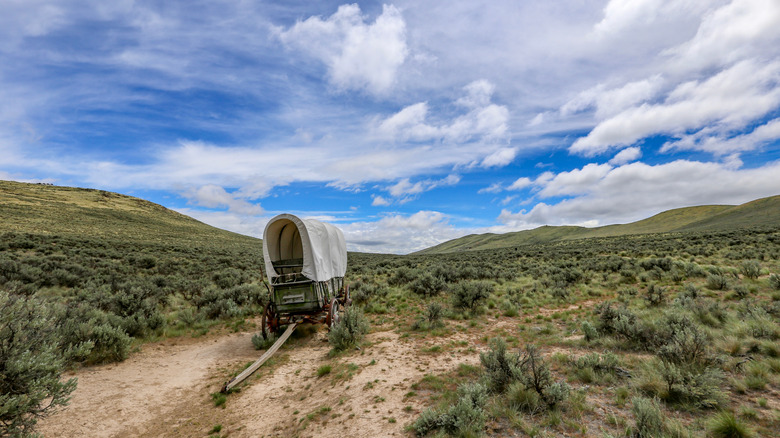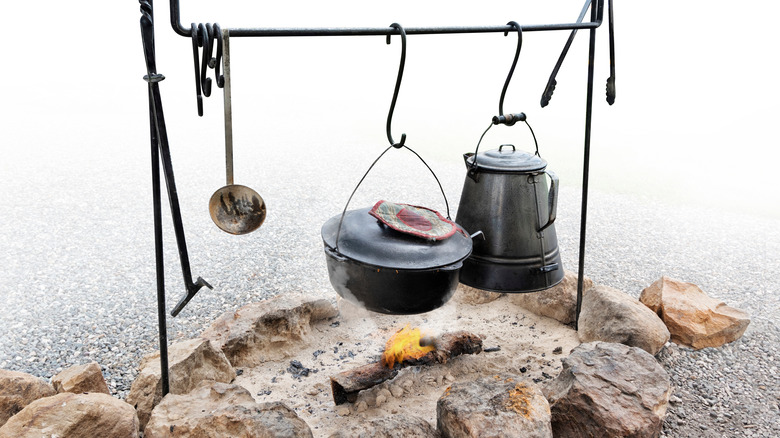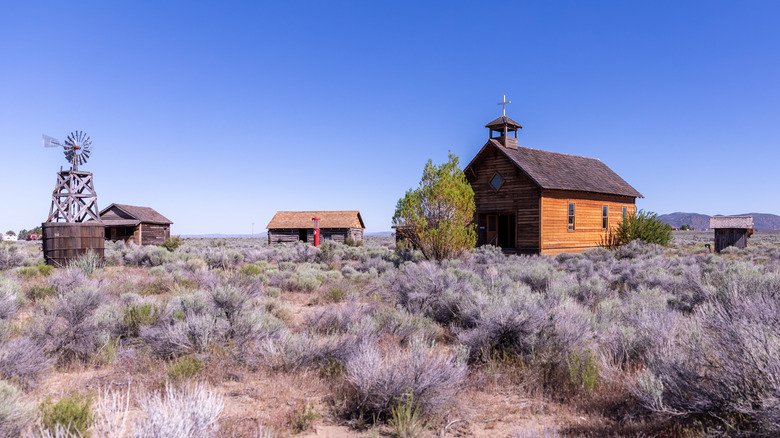These Were The Supplies You Needed To Survive The Oregon Trail
In the mid-1800s, many people set their sights on building a new life for themselves in the Oregon Territory. However, to get to this wondrous promised land, settlers had to brave the roughly 2,000-mile route known as the Oregon Trail, which stretched from Independence, Missouri, to Oregon City, Oregon (via History). And what travelers brought with them helped determine whether they would survive the perilous journey.
Known as "overlanders," those traveling the trail had to plan and pack for a trip that could take anywhere from four to six months. Opportunities to get more supplies along the way were very limited, so overlanders couldn't count on getting a chance to restock. Even if they did, they had to be prepared for sticker shock. Prices at trading posts could more than double what they paid at the start of the trail. So each wagon needed to be filled with all the essentials to sustain life for the rough road ahead. According to the Historic Oregon City website, the most common wagons used could carry roughly 2,500 pounds of goods. So one of the first important purchases for these travelers was a team of oxen to pull the wagons.
Travelers needed months' worth of food
Food had to be the biggest part of the Oregon Trail supply list. According to the Oregon Trail Center, a family of four would need more than 1,500 pounds of foodstuffs for the journey: 600 pounds of flour, 400 pounds of bacon, 200 pounds of lard, 120 pounds of biscuits, 100 pounds of sugar, 60 pounds of coffee, and 4 pounds of tea. The Job Carr Museum had some other ideas for necessary items for an Oregon Trail provisions list. It cited that each adult was recommended to bring 15 pounds of ground corn, 10 to 50 pounds of rice, 10 pounds of salt, 1 to 2 bushels of dried fruit, and up to a bushel of dried beans. A keg of pickles was also a popular choice, according to Historic Oregon City. Some wealthier overlanders had a separate wagon just for food.
All the utensils and tools for preparing the food had to be brought along, too. They needed to pack tin cups and plates, a Dutch oven, a cast iron skillet, coffee pot or kettle, and more. Water barrels were another critical supply, since there were stretches of the trail where fresh water would be hard to find. Some overlanders brought along a cow or two for milk, which also could be made into butter. No one wanted to starve before making it to Oregon.
Weapons and tools were also important
Besides food, there were other concerns that Oregon Trail travelers had to address. A rifle and ammunition were also at the top of the must-have list. These would help protect the family and allow them to hunt for food (via Historic Oregon City). Shotguns and revolvers have also been a part of the settler's traveling armory. And no one should start the journey without a good hunting knife. A fishing pole came in handy as well.
Other tools were needed to fix the wagon if it broke down, and extra shoes for the oxen hooves were important, too. For camping out, they needed a tent and blankets. Overlanders also required clothing for the long journey. They had to prepare for any medical emergencies along the way as well. Some of the medicines of the day might be surprising. According to the Fort Morgan Times, whiskey was brought along as a cure for all sorts of ailments. Vinegar was believed to treat cholera, which was one of the most common diseases encountered on the trail. Overlanders also often carried farming tools, such as a plow and a scythe, and building tools, such as a saw and a mallet, that they would need to start their new life in Oregon (via Oregon Trail Center).


